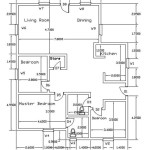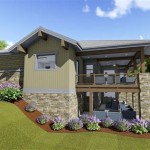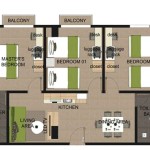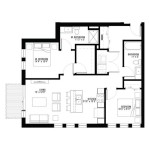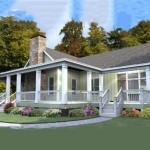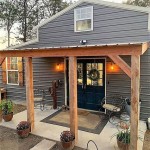Exploring the Realm of 5-Bedroom House Plans
The demand for 5-bedroom house plans reflects a variety of lifestyle needs. These plans cater to large families, multi-generational households, individuals requiring ample space for a home office or hobbies, and those who frequently host guests. Designing a 5-bedroom home presents unique challenges and opportunities, demanding careful consideration of layout, functionality, and overall aesthetic appeal.
A successful 5-bedroom house plan goes beyond simply accommodating a specific number of bedrooms. It encompasses a holistic approach to spatial organization, ensuring that each room contributes to the overall livability and harmony of the dwelling. Factors such as bedroom size, bathroom placement, common areas, and circulation paths all play crucial roles in determining the effectiveness of the design.
The article will delve into the key aspects of 5-bedroom house plans, offering guidance on optimizing space, incorporating desired features, and achieving a balance between privacy and shared living. It will explore different architectural styles, layout options, and design considerations to help prospective homeowners make informed decisions and create a home that perfectly suits their needs.
Key Point 1: Considerations for Space and Layout Optimization
Designing a 5-bedroom house necessitates meticulous attention to space utilization. Maximizing the floor area available for each bedroom, while simultaneously ensuring sufficient space for common areas, requires strategic planning. Open-concept living areas, which combine the living room, dining room, and kitchen, are often employed to create a sense of spaciousness and promote social interaction. However, it is essential to delineate zones within the open space to prevent the area from feeling chaotic or undefined.
Bedroom sizes should be carefully considered based on intended use. The master bedroom, typically the largest, may include a walk-in closet and en-suite bathroom. Other bedrooms can be designed as guest rooms, children's rooms, or home offices, with sizes tailored accordingly. Incorporating built-in storage solutions, such as wardrobes and shelving units, can help maximize floor space and reduce clutter.
The layout of the bedrooms in relation to the common areas is another crucial consideration. Separating the master bedroom from the other bedrooms can provide increased privacy for the homeowners. Placing children's bedrooms in close proximity to each other can foster a sense of camaraderie and facilitate parental supervision. Accessibility is also important, especially for individuals with mobility limitations. Ground-floor bedrooms and bathrooms may be necessary to accommodate elderly relatives or guests with disabilities.
The placement of bathrooms is equally important. An en-suite bathroom in the master bedroom is a common feature, providing convenience and privacy. Additional bathrooms should be strategically located to serve the other bedrooms and common areas. Powder rooms, typically containing only a toilet and sink, can be placed near the entrance for guest use. The number of bathrooms required will depend on the size of the household and the frequency of guests.
Consideration of natural light and ventilation is critical. Windows should be strategically placed in each room to maximize natural light and provide adequate ventilation. Skylights can also be used to brighten interior spaces that lack direct access to windows. Proper ventilation helps to maintain air quality and prevent the buildup of moisture, which can lead to mold growth. Orientation of the house on the building lot should consider sunlight exposure and prevailing winds. Southern exposure generally provides the most sunlight, while prevailing winds can be used to cool the house in the summer.
Key Point 2: Architectural Styles and Design Elements
The architectural style of a 5-bedroom house can significantly impact its overall aesthetic appeal and functionality. Various architectural styles are suitable for 5-bedroom homes, each with its unique characteristics and design elements. Some common styles include:
* Traditional: Characterized by classic features such as symmetrical facades, gabled roofs, and formal living spaces. * Modern: Emphasizes clean lines, minimalist design, and open floor plans. Often incorporates large windows and natural materials. * Craftsman: Features exposed rafters, wide porches, and handcrafted details. Emphasizes natural materials and earthy tones. * Ranch: Typically single-story homes with a low-pitched roof and an emphasis on horizontal lines. Often includes a large backyard. * Contemporary: Blends elements of various architectural styles, often incorporating innovative materials and design features.The choice of architectural style should align with the homeowner's personal preferences and the surrounding environment. Factors such as climate, topography, and local building codes can influence the selection. The exterior design of the house should complement the interior layout and create a cohesive aesthetic.
Design elements such as the roofline, window styles, and exterior materials can also contribute to the overall character of the house. The roofline can be gabled, hipped, or flat, depending on the architectural style. Window styles can range from traditional double-hung windows to modern casement windows. Exterior materials can include brick, stone, wood, stucco, or a combination of materials. Landscaping plays a crucial role in enhancing the curb appeal of the house. Trees, shrubs, and flowers can be used to soften the lines of the house and create a welcoming atmosphere.
Interior design elements, such as flooring, wall colors, and lighting fixtures, should be carefully selected to create a cohesive and harmonious living space. Flooring options include hardwood, tile, carpet, and laminate. Wall colors can be chosen to create different moods and atmospheres. Lighting fixtures should provide adequate illumination while also contributing to the overall aesthetic of the room. Furniture should be chosen to complement the architectural style and provide comfortable seating and storage.
Consideration should also be given to accessibility features, particularly for homeowners with mobility limitations. Ramps, wider doorways, and grab bars can be incorporated into the design to make the house more accessible. Universal design principles, which aim to create a comfortable and functional living space for people of all ages and abilities, can be applied throughout the house.
Key Point 3: Incorporating Desired Features and Amenities
Beyond the basic requirements of bedrooms and bathrooms, 5-bedroom house plans often incorporate a variety of desired features and amenities. These features can enhance the livability, functionality, and overall value of the home. Some common amenities include:
* Home Office: A dedicated workspace for remote work, studying, or managing household finances. * Media Room: A space for watching movies, playing video games, or listening to music. * Game Room: A recreational space for playing games, such as billiards, ping pong, or board games. * Home Gym: A space for exercising and maintaining physical fitness. * Outdoor Living Area: A patio, deck, or porch for relaxing and entertaining outdoors. * Swimming Pool: A recreational feature for swimming, sunbathing, and hosting pool parties. * Three-Car Garage: Additional space for parking vehicles and storing tools and equipment.The inclusion of these amenities will depend on the homeowner's personal preferences, lifestyle, and budget. Careful planning is essential to ensure that the amenities are integrated seamlessly into the overall design and do not detract from the functionality of the house.
A home office should be located in a quiet area of the house, away from distractions. It should have adequate lighting, ventilation, and storage space. A media room should be equipped with comfortable seating, a large screen, and a high-quality sound system. A game room should be spacious enough to accommodate the desired games and activities. A home gym should have adequate ventilation and flooring to protect against damage from equipment. An outdoor living area should be designed to complement the surrounding landscape and provide comfortable seating and shade.
Sustainability is an important consideration when incorporating desired features and amenities. Energy-efficient appliances, solar panels, and rainwater harvesting systems can help reduce the environmental impact of the house. Sustainable materials, such as bamboo flooring and recycled countertops, can also be used to create a more eco-friendly living space. Water conservation measures, such as low-flow toilets and showerheads, can help reduce water consumption.
Smart home technology can be integrated into the house to automate various functions, such as lighting, temperature control, and security. Smart thermostats can be programmed to adjust the temperature based on occupancy and time of day. Smart lighting systems can be controlled remotely using a smartphone or tablet. Security systems can provide peace of mind and protect against intruders.
When planning a 5-bedroom house, it's crucial to prioritize needs versus wants. Create a realistic budget and explore various financing options. Consult with an architect or experienced home designer to ensure that the house plan meets all applicable building codes and regulations. A well-designed 5-bedroom house can provide a comfortable, functional, and aesthetically pleasing living space for years to come.

Room To Grow 5 Bedroom House Plans Houseplans Blog Com

Floor Plan 5 Bedrooms Single Story Five Bedroom Tudor House Plans Dream

Modern 5 Bedroom House Plans And Home Designs Nethouseplansnethouseplans With Pictures

Traditional Style House Plan 5 Beds 2 Baths 2298 Sq Ft 84 218 Single Y Plans Bedroom

5 Bedroom House Plans Perth Home Designs 2024

Mediterranean Style House Plan 5 Beds 3 Baths 4457 Sq Ft 320 1469 Plans One Story Bedroom 6

10 Inspiring 5 Bedroom House Plans Designs And Layouts In 2024 To Co Ke

House Plan 16x13 Meter With 5 Bedrooms Pro Home Decors

5 Bedroom House Plans Under 3 000 Sq Ft Houseplans Blog Com

Big Five Bedroom House Plans Blog Dreamhomesource Com
Related Posts


